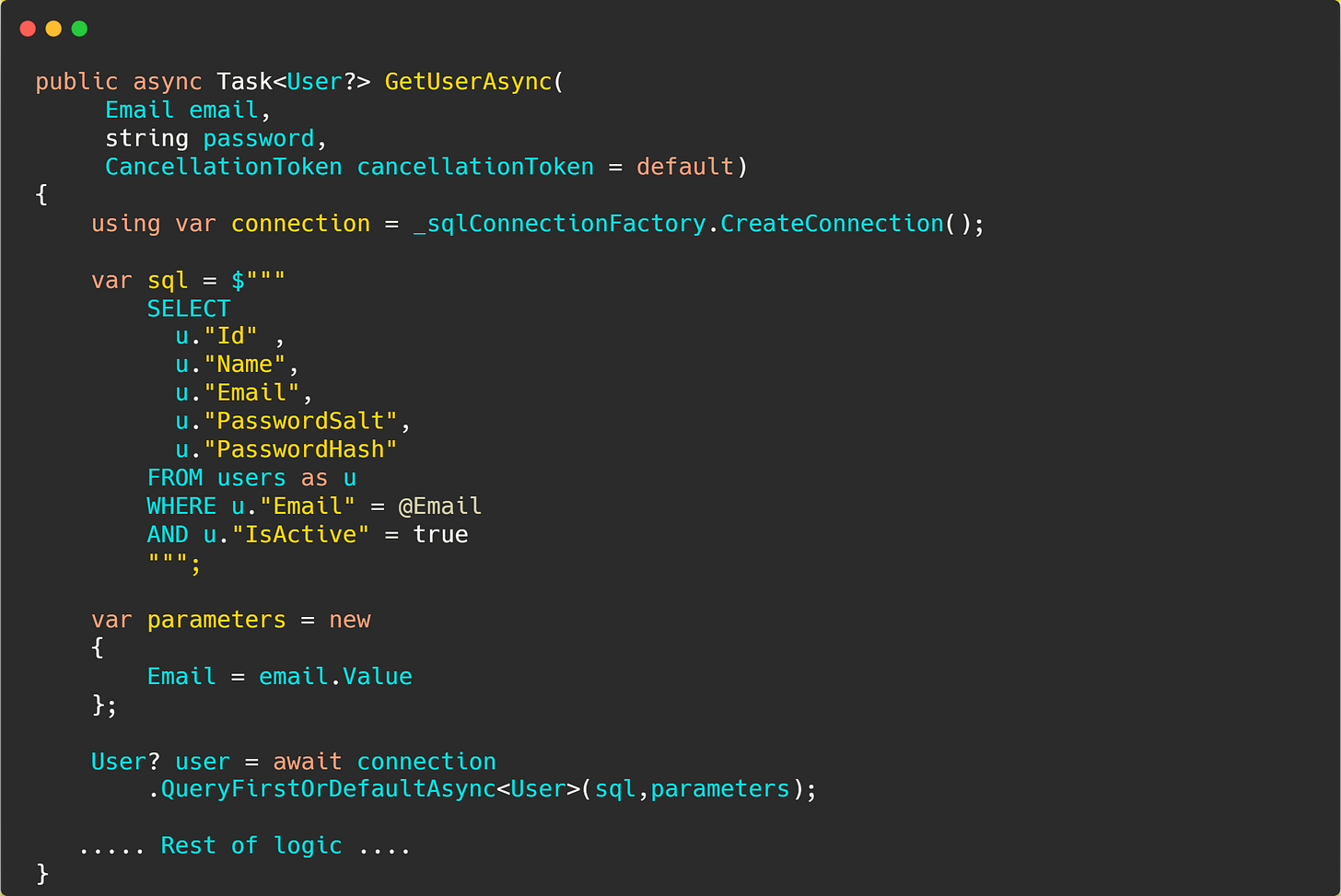EP 61 : Custom Type Handling with Dapper in .NET
Read Time : 2 Mins
Dapper is an opensource performant ORM (Object Relational Mapping) library used extensively in the .NET world
If you want to learn how we can use it in .NET, read this article :
How to use Dapper in .NET 6.0 for CRUD Operations
Adding an entity for the demo
Introducing value type
Handling conversion in configuration
Querying data with Dapper
Create type handler
Basic User Entity
We can take an example of a basic user entity, which contains a couple of properties :
public sealed class User
{
public Guid Id { get; private set; }
public string Name { get; private set; } = string.Empty;
public string Email { get; private set; }
public string PasswordSalt { get; private set; } = string.Empty;
public string PasswordHash { get; private set; } = string.Empty;
}
Introducing Value Types
After a couple of time, we have decided to introduce value types in our project for example in the current situation we could add an Email value type like this :
public sealed record Email(string Value)
{
public static Email Empty => new(string.Empty);
}We could introduce multiple value types and a proper type for each type on the same pattern. So after this change, our User class would look like this:
public sealed class User
{
public Guid Id { get; private set; }
public string Name { get; private set; } = string.Empty;
public Email Email { get; private set; }
public string PasswordSalt { get; private set; } = string.Empty;
public string PasswordHash { get; private set; } = string.Empty;
}Handling Conversion in Configuration
We need to add configuration so that type can be handled automatically in the configuration class of our entity like this :
internal class UserConfiguration : IEntityTypeConfiguration<User>
{
public void Configure(EntityTypeBuilder<User> builder)
{
builder.Property(user => user.Email)
.HasMaxLength(400)
.HasConversion(email => email.Value, value => new Email(value))
.IsRequired();
}
}Querying data with Dapper
Suppose this is our example where we are trying to retrieve a user using Dapper.
Let’s ignore the discussion that I could have used EF Core, let’s suppose this query is much more complex and I am displaying this for the sake of how we can solve complex types of problems.
This code will throw an error right something similar to this :
Error is fine because the database Email type is a string, not the Email type we defined. This is where the type handler comes to the rescue.
How to create a type handler in .NET?
Type handlers handle complex types and parse them as per needs.
We can utilize SqlMapper.TypeHandler<T> from dapper for such a purpose.
Let’s create our Email type handler to resolve our issue :
This will take care of the conversion for us, you can add a debugger to make sure, it works.
The last thing is to register this type of handler with DI :
Whenever you’re ready, there are 2 ways I can help you:
Promote yourself to 10400+ subscribers by sponsoring this newsletter
Patreon Community: Read 200+ articles I have published so far in one place.





